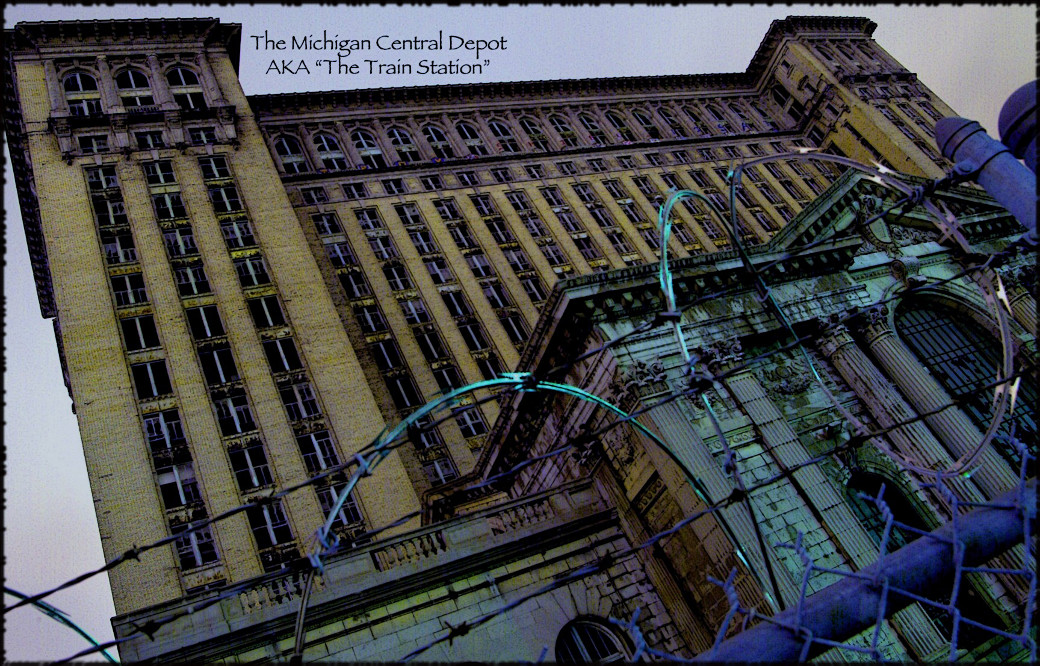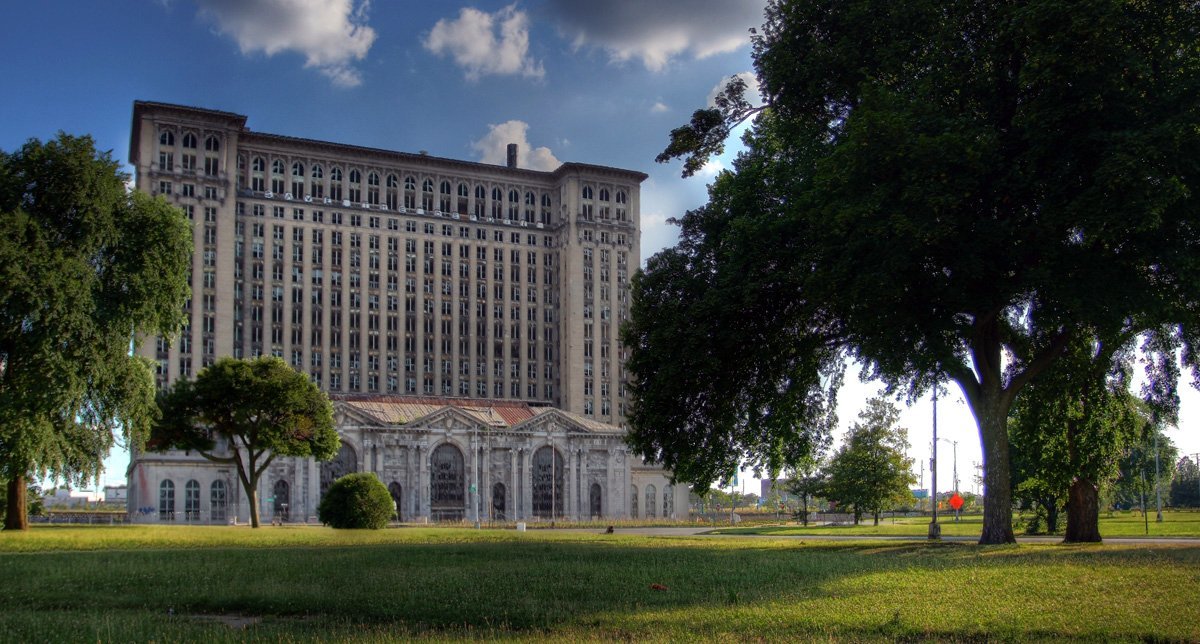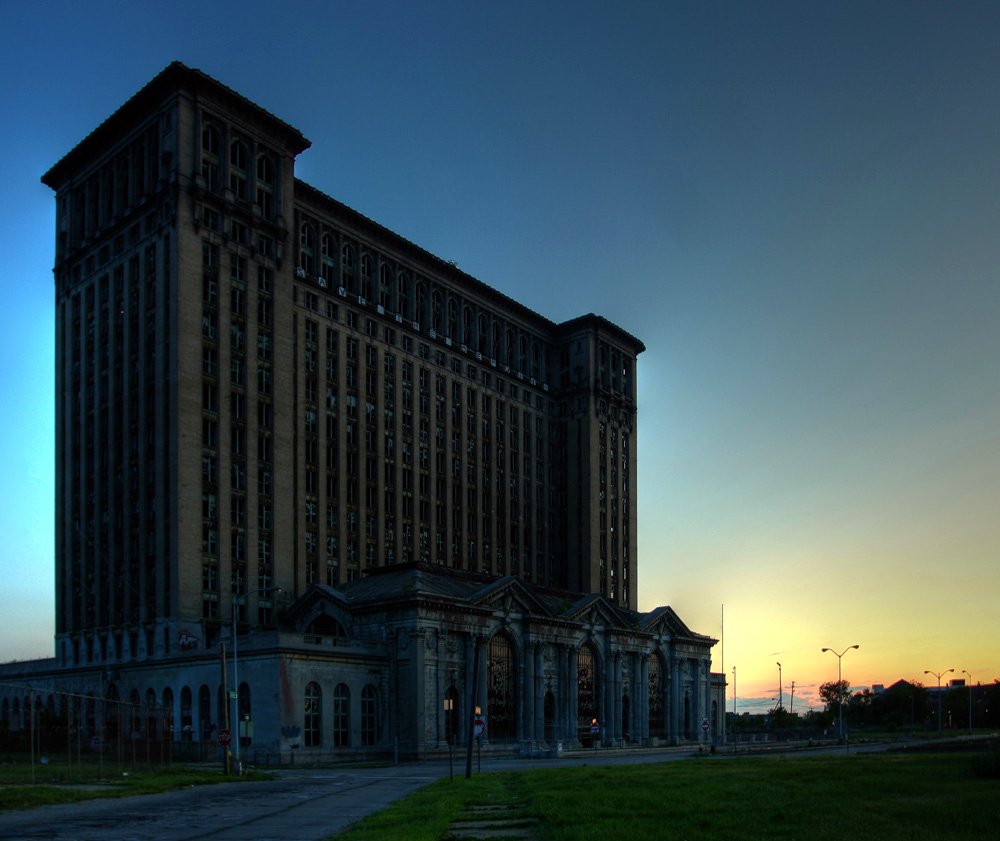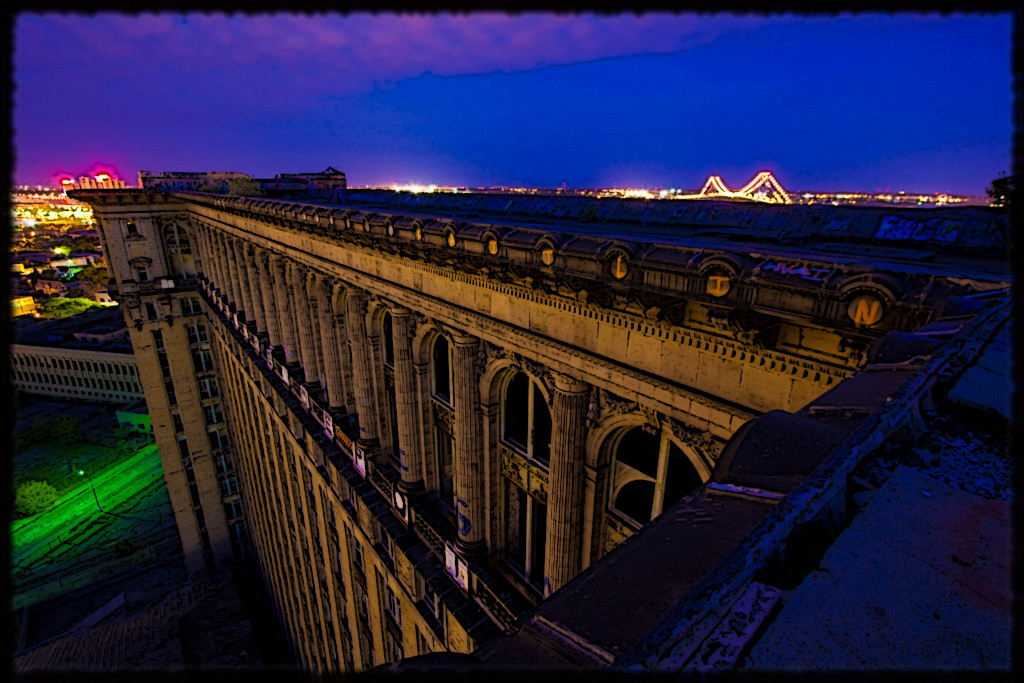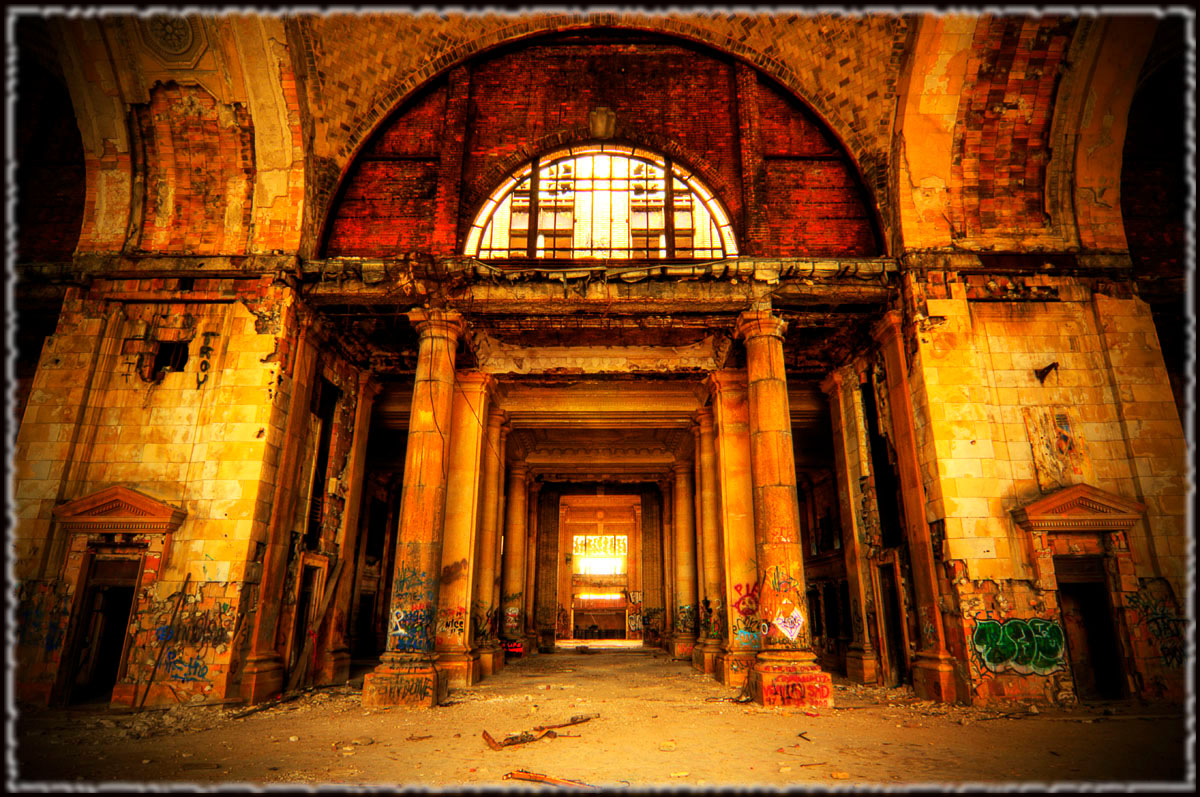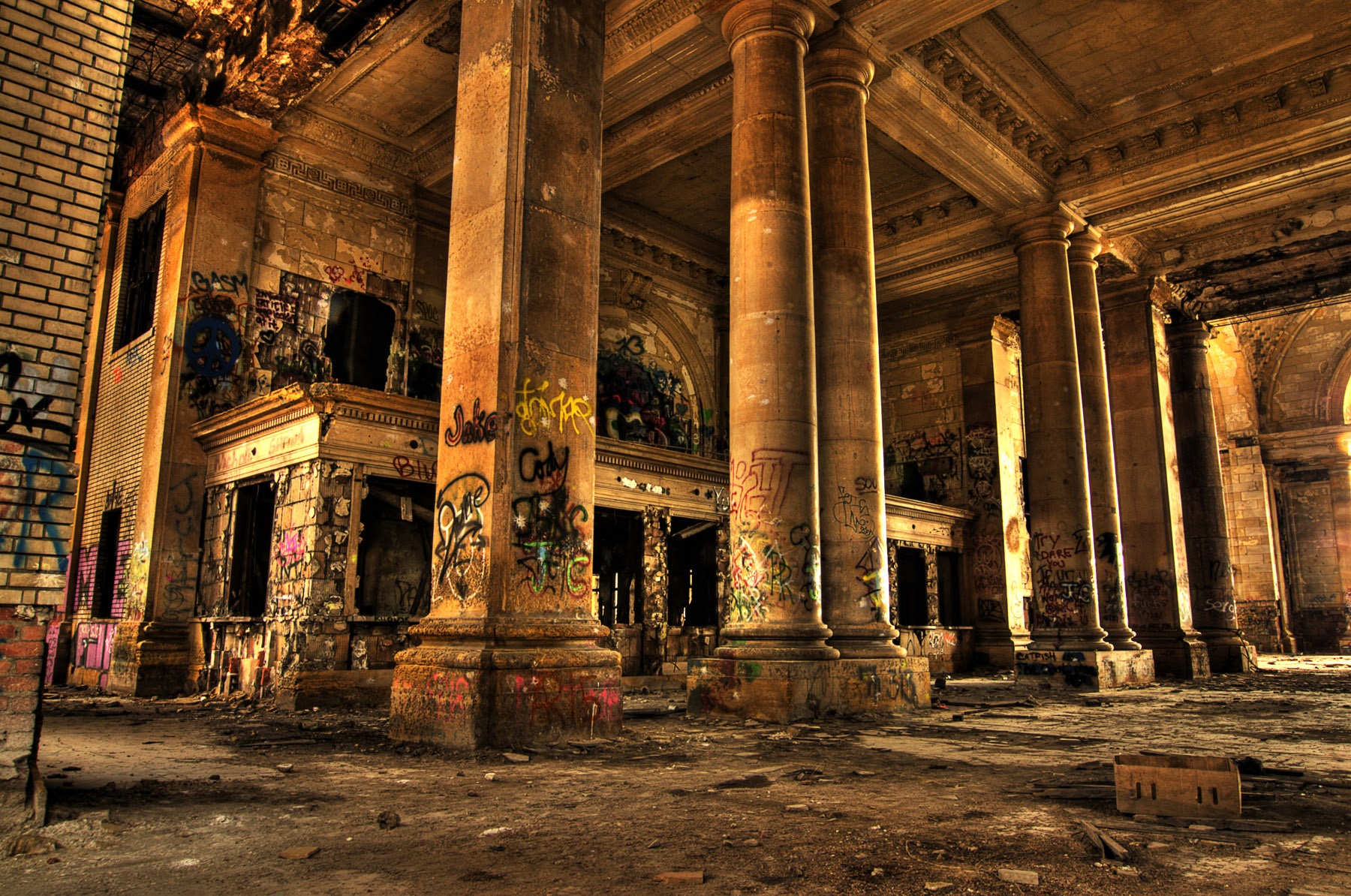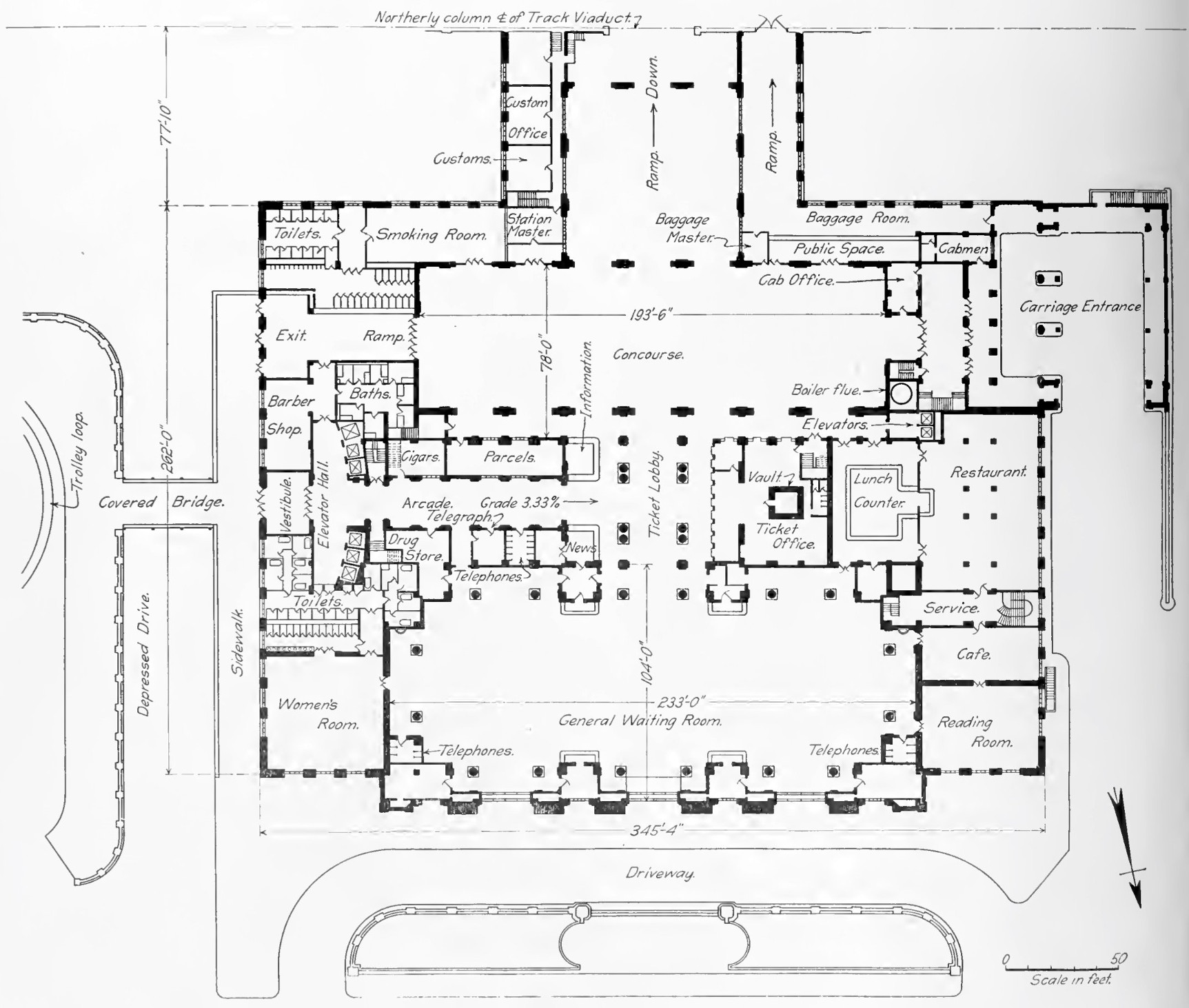Michigan Central Station
Contents
Introduction
Michigan Central Station (also known as Michigan Central Depot or MCS) is a historic former main intercity passenger rail depot in Detroit, Michigan. Built for the Michigan Central Railroad, it replaced the original depot in downtown Detroit, which was shuttered after a major fire on December 26, 1913, forcing the still unfinished station into early service. Formally dedicated on January 4, 1914, the station remained open for business until the cessation of Amtrak service on January 6, 1988. Comprising a train depot and 13-story and 2 mezzanine level office tower with a roof height of 230 feet (70 m), it was the tallest rail station in the world at the time of its construction.
The building is located in the Corktown district of Detroit near the Ambassador Bridge, approximately 3⁄4 mi (1.2 km) southwest of downtown Detroit. It is located behind Roosevelt Park, and the Roosevelt Warehouse is adjacent to the east, with a tunnel connection to the MCS. The city's Roosevelt Park serves as a grand entryway to the station. It was added to the National Register of Historic Places in 1975.
Appearance
By Day
Twilight
Night
The Interior
Layout
History
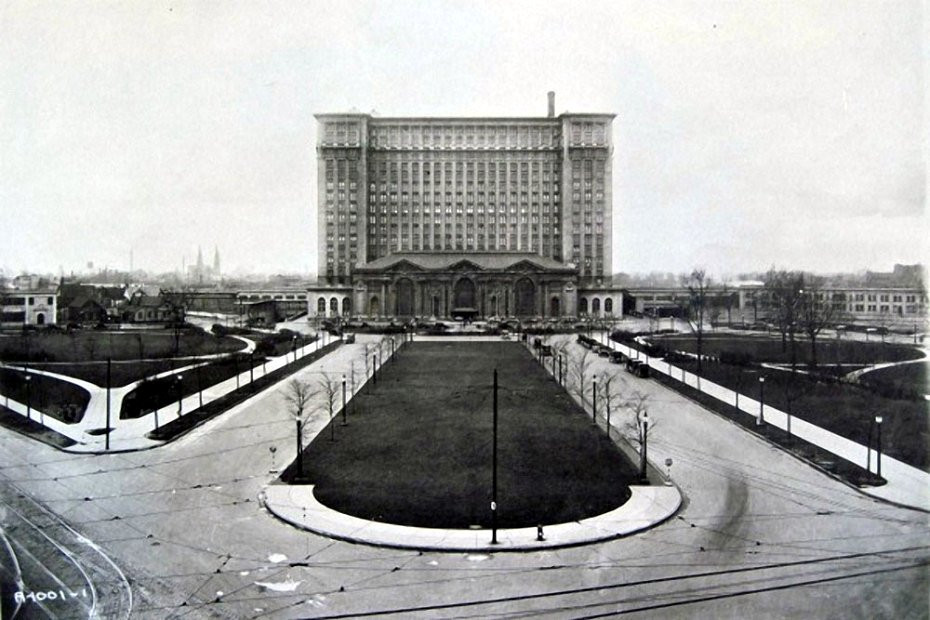
The building began operating as Detroit's main passenger depot in 1913 after the older Michigan Central Station burned on December 26, 1913. It was owned and operated by Michigan Central Railroad and was planned as part of a large project that included the Michigan Central Railway Tunnel below the Detroit River for freight and passengers. The old station was located on a spur line, which was inconvenient for the high volume of passengers it served. The new Michigan Central placed passenger service on the main line.
The growing trend toward increased automobile use was not a large concern in 1912, as is evident in the design of the building. Most passengers would arrive at and leave from Michigan Central Station by interurban service or streetcar, due to the station's distance from downtown Detroit. The station was placed away from downtown in order to stimulate related development to come in its direction.[citation needed] An ambitious project to connect the station to the Cultural Center via a wide boulevard was never realized. Nonetheless, the station remained active for several decades. The trains of the New York Central Railroad, the company which acquired the Michigan Central Railroad, the Baltimore and Ohio Railroad and the Canadian Pacific Railroad operated from the station.
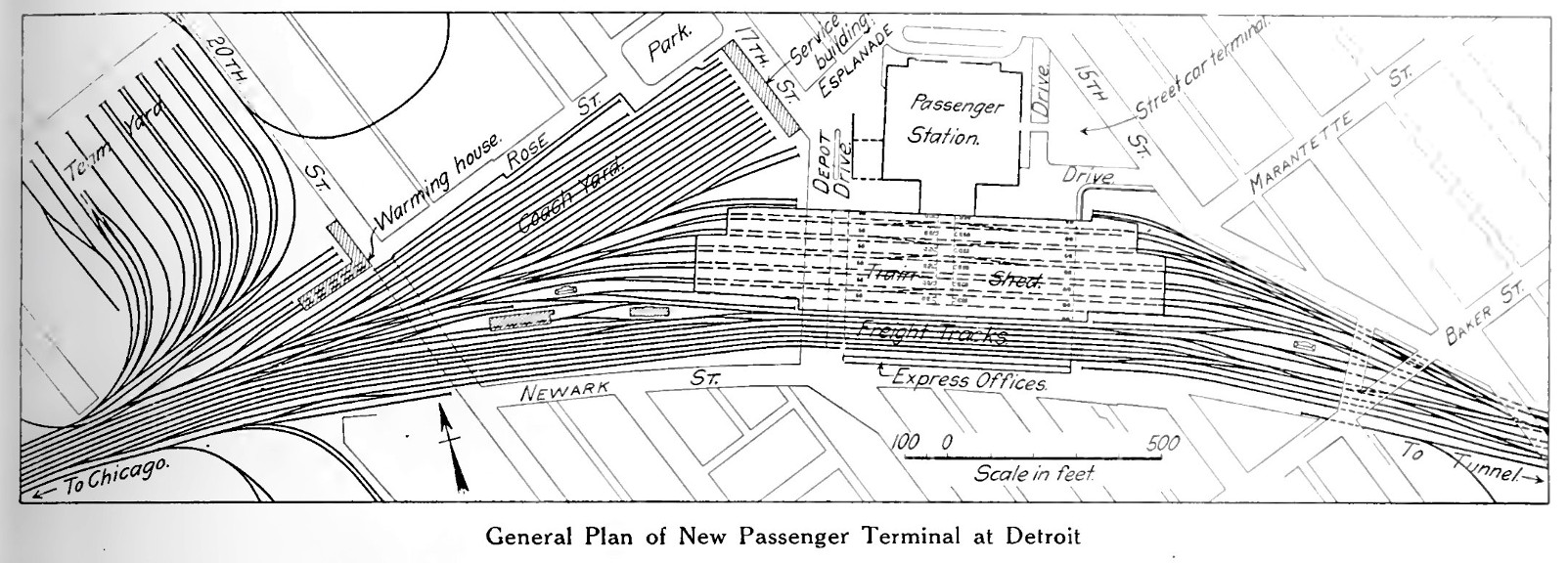
At the beginning of World War I, the peak of rail travel in the United States, more than 200 trains left the station each day and lines would stretch from the boarding gates to the main entrance. In the 1940s, more than 4,000 passengers a day used the station and more than 3,000 people worked in its office tower. Among notable passengers arriving at MCS were Presidents Herbert Hoover, Harry S. Truman and Franklin D. Roosevelt, actor Charlie Chaplin, inventor Thomas Edison and artists Frida Kahlo and Diego Rivera.
In the 1920s Henry Ford began to buy land near the station and made construction plans, but the Great Depression and other circumstances squelched this and many other development efforts. The original design included no large parking facility. When the interurban service was discontinued less than two decades after MCS opened, the station was effectively isolated from the large majority of the population who drove cars and needed parking to use the facility.
Decline and Abandonment
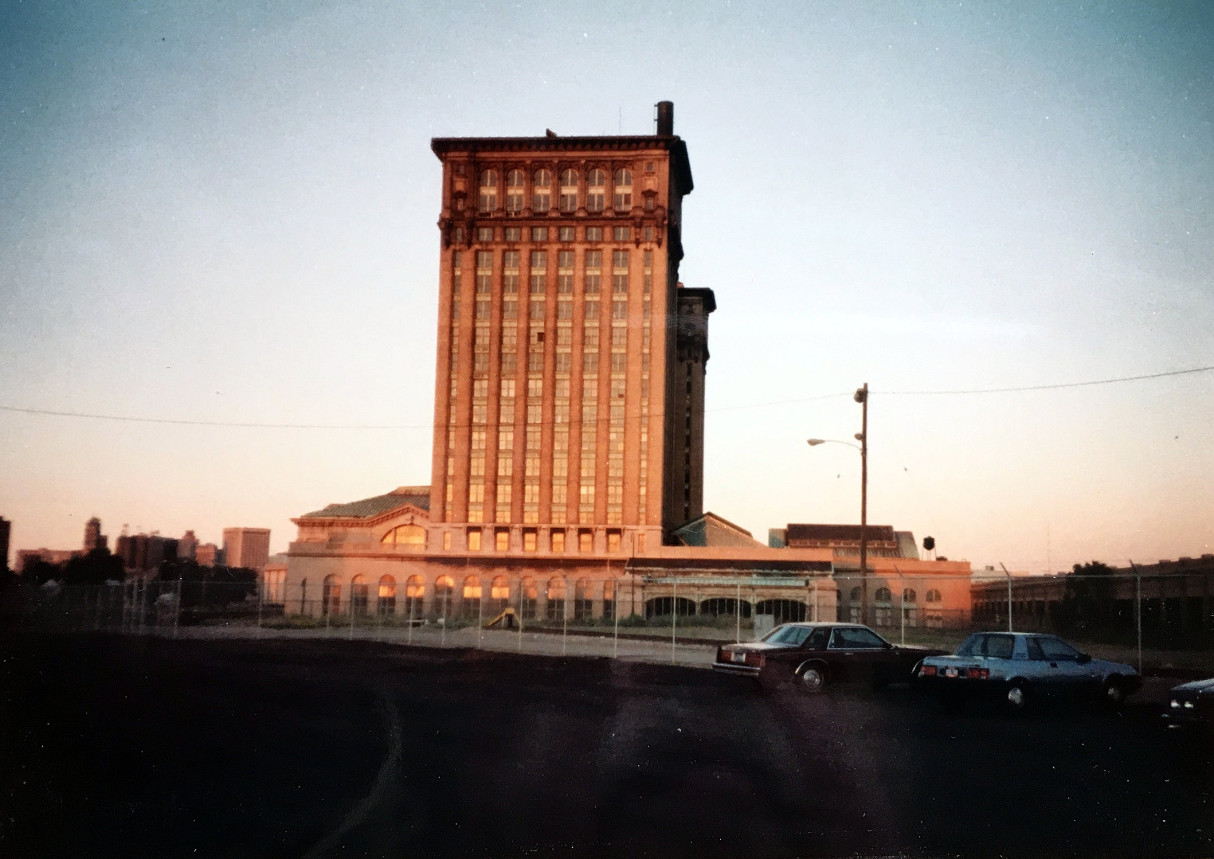
Passenger volume did not decrease immediately. During World War II, the station was used heavily by military troops. After the war, with a growth in automobile ownership, people used trains less frequently for vacation or other travel. Service was reduced and passenger traffic became so low that the owners of the station attempted to sell the facility in 1956 for US$5 million, one-third of its original 1913 building cost. Another attempted sale in 1963 failed for lack of buyers. In 1967, maintenance costs were seen as too high relative to the decreasing passenger volume. The restaurant, arcade shops, and main entrance were closed, along with much of the main waiting room. This left only two ticket windows to serve passengers and visitors, who used the same parking-lot entrance as railroad employees working in the building.
Amtrak assumed operation of the nation's passenger rail service in 1971, reopening the main waiting room and entrance in 1975. It started a $1.25 million renovation project in 1978. Six years later, the building was sold for a transportation center project that never materialized. On January 6, 1988, the last Amtrak train pulled away from the station after owners decided to close the facility. Amtrak service continued at a platform near the building until the new Detroit station opened several miles away in New Center in 1994. In July 1992, the Detroit Master Plan of Policies for the southwest sector's urban design identified the station as an attractive or interesting feature to be recognized, enhanced and promoted.
Manuel Moroun
Controlled Terminals Inc. acquired the station in 1996. Its sister company, the Detroit International Bridge Co., owns the nearby Ambassador Bridge and both are part of a group of transportation-related companies owned by businessman Manuel Moroun, Chairman and CEO of CenTra Inc. The company demolished the train shed in 2000, and converted the remaining tracks and platforms into an intermodal freight facility, named "Expressway" and operated by Canadian Pacific Railway. This facility was closed in June 2004.
Future
Sources
https://www.historicdetroit.org/galleries/michigan-central-station-photos/
https://en.wikipedia.org/wiki/Michigan_Central_Station
http://zfein.com/photography/detroit/mcs/index.html (Pictures)
